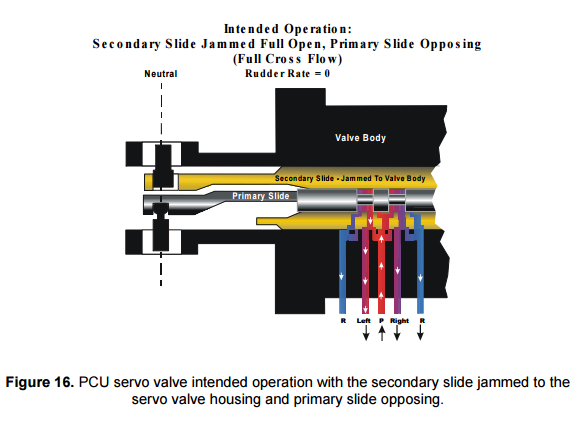As was discovered during the NTSB investigation into the crash of USAir Flight 427, the design of the servo valve inside the main rudder power control unit (PCU) formerly used on 737 Original- and Classic-series aircraft was vulnerable to causing uncommanded rudder reversals if the valve’s secondary slide jammed to the valve housing at a position sufficiently far from neutral (the precise threshold varies depending on the valve and whether the secondary slide jammed in the extend or the retract position).
The valve was designed so that a secondary-slide-to-valve-housing jam would not cause a reversal:
(Image source, page 83 of report/page 107 of PDF file)
However, if the pilot applied a sufficiently fast, abrupt rudder input, this would cause the valve’s primary slide to overtravel past the secondary slide, porting hydraulic fluid in the wrong direction and causing the rudder to move in the direction opposite from that commanded, all the way to its blowdown limit:
(Image source, page 84/108)
Given the potential catastrophic results of an unexpected rudder reversal (especially at lower airspeeds), why wasn’t the valve tested to make sure that it would, in fact, react to a jam in the manner in which it was designed to do so, and, if so, why wasn’t this failure mode discovered in testing?


